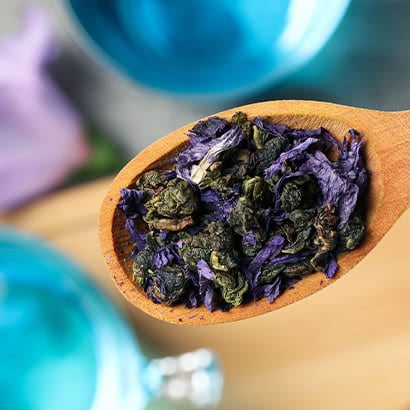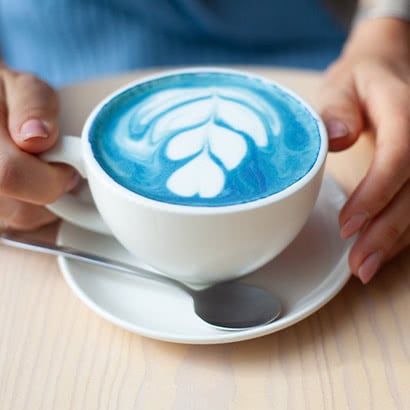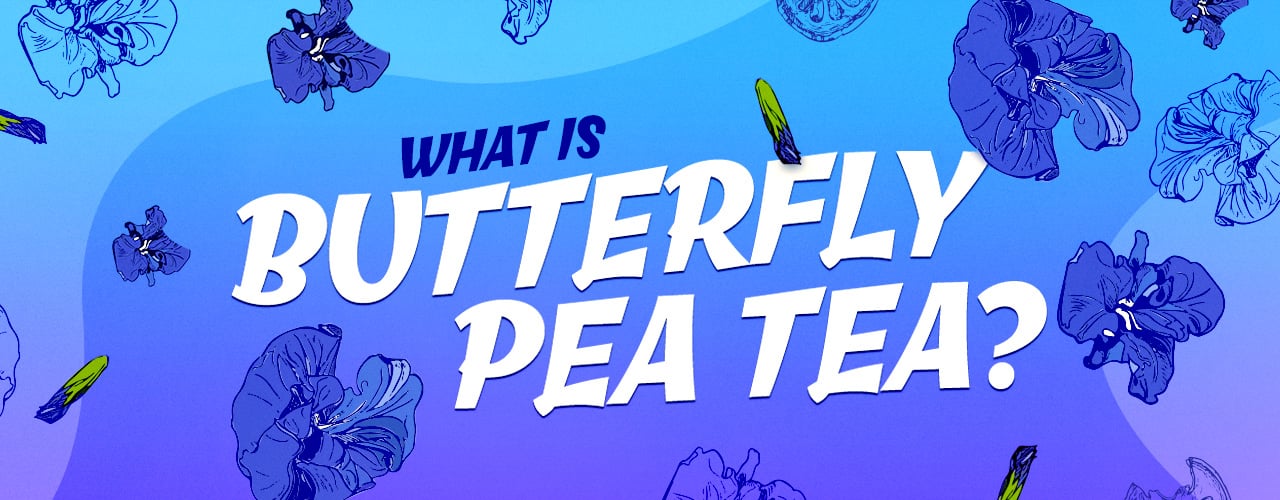Tea houses offer timeless elegance and upscale experiences, and while they have long-standing traditions, they’re anything but outdated. Tea is trending amongst young consumers, with 75% of Gen Z reporting as tea drinkers. By opening a tea house, you can capitalize on the modern desire for experiential dining and interest in the health benefits of tea. We guide you through the steps of launching your tea business.
Click below to learn more about opening a tea business:
Conduct Market Research
Develop a Tea House Concept
Perform a Location Analysis
Write a Business Plan
Secure Financial Backing
Gain Knowledge About Tea
Consider Becoming a Tea Sommelier
Curate a Tea Shop Aesthetic
Create a Tea Shop Menu
Purchase Tea Equipment
Acquire Health and Business Permits
Create a Website
Market Your Tea Business
Hire and Train Staff
Host a Soft and Grand Opening
1. Conduct Market Research
Conducting market research allows you to gather valuable insights that can inform your business decisions and help you position your tea shop for success. By understanding who your target customers are, you can tailor your products and marketing strategies to meet their needs and preferences. You want to know where your core customers are located, what motivates them to make a purchase, and what their values are.
In addition to identifying your target customers, market research also involves analyzing trends and consumer preferences in the tea industry. This includes staying up to date on the latest tea flavors, brewing techniques, and packaging innovations that resonate with consumers. This will affect whether you’re establishing a trendy tea bar or a traditional English-style tearoom.
2. Develop a Tea House Concept
Your tea house concept will be the foundation upon which your tea shop’s brand and identity are built. It sets the tone for the customer experience and helps create a cohesive and memorable atmosphere that resonates with your target market. Whether you choose a traditional tea house with a focus on authentic tea ceremonies and cultural experiences, a modern tea shop with a trendy and innovative approach, or you're interested in starting a boba tea business, your concept should be reflected in every detail of your business.
Knowing your concept and who you’re serving will help you write your mission statement. Your mission statement, and the concept you create to fulfill it, helps you differentiate your tea shop from competitors. By offering a distinct and memorable experience that aligns with your concept, you can attract and retain customers drawn to your specific brand of tea culture. Whether through specialty tea blends, themed decor, or interactive tea-tasting events, your concept should set you apart in a crowded market and appeal to a niche audience.
3. Perform a Location Analysis
Choosing a location with high foot traffic is essential for attracting potential customers to your tea shop. Areas with bustling streets, shopping centers, or nearby popular attractions can help increase the chances of attracting more customers. Select a location that offers good visibility from the street, making it easy for passersby to notice your shop and be enticed to step inside. A location with ample signage opportunities can also help increase visibility.
Consider the proximity of your tea shop to other businesses, such as cafes, restaurants, or retail stores. Being located near complementary businesses can create synergy and attract customers who may be interested in visiting multiple establishments in the area. Additionally, being close to other businesses can help increase foot traffic and exposure for your tea shop.
4. Write a Business Plan
A well-crafted business plan serves as a roadmap for your tea shop, outlining its objectives and future projections. This document plays a crucial role in securing financial support from banks and investors, as it provides them with all the necessary information to make an informed decision about funding your tearoom. To create a thorough and effective tea shop business plan, include the following key sections:
Executive Summary: A high-level summary of your business plan highlighting your overall goals and why investors should support your tea business.
Company Description: A company description provides more detailed projections and strategies than an executive summary.
Concept and Menu: Describe your tea shop concept and what menu items you will serve. Will you be tea-exclusive? If offering food, what kind of food?
Management and Ownership Structure: Give detailed insight into what type of ownership structure your tearoom will have, including the management hierarchy.
Employees and Staffing Needs: Give insight into how many employees you need to operate your tea shop successfully.
Marketing and Competitor Analysis: Analyze potential competitors and identify target demographics and markets.
Advertising and Marketing Strategies: Outline relevant marketing and advertising strategies you plan to use to reach your target demographics.
Financials: List expected expenses and costs. Analyze financial projections including how long it will take the business to become profitable.
5. Secure Financial Backing
Securing financial backing is a crucial step in turning your vision into a reality. Explore different funding sources to secure startup capital for your tea shop. Options include personal savings, loans from financial institutions, investment from family and friends, crowdfunding campaigns, or seeking out business grants tailored for small businesses in the food and beverage industry. For purchasing tea shop equipment, take advantage of WebstaurantStore’s partnership with Credit Key which offers a beneficial equipment financing program.
Create realistic financial projections that estimate your tea shop's revenue, expenses, and profitability over the first few years of operation. This information should be outlined in your business plan and is crucial for demonstrating the viability of your business to investors and ensuring that you have a solid financial strategy in place to support your tea shop's growth. By carefully considering your financial needs and sharing a comprehensive business plan with potential investors, you can gain the financial backing you need to start your business and maintain its ongoing financial health.
6. Gain Knowledge About Tea
There are various types of tea, including black, green, white, oolong, and herbal teas, each with unique flavors and characteristics. By familiarizing yourself with tea varieties, you can offer a wide selection to cater to varying preferences. Learning about tea brewing methods is equally important. Factors such as water temperature, steeping time, and tea-to-water ratio significantly impact the flavor of the tea. Mastering these techniques will help you serve the perfect cup of tea every time.
Additionally, understanding tea culture can enhance the overall customer experience. Tea has a rich history and cultural significance in many countries, influencing traditions, ceremonies, and rituals. Whether you’re offering a traditional English- or Asian-style tea service, incorporating this knowledge into your tea shop can add depth and authenticity to the tea-drinking experience. Expand your tea knowledge by enrolling in courses, workshops, or obtaining certifications. These educational opportunities provide in-depth insights into tea varieties, production processes, and tasting techniques.
7. Consider Becoming a Tea Sommelier
To take your tea expertise to the next level, consider obtaining a tea sommelier certification. A tea sommelier is a trained and knowledgeable tea professional who has completed the TAC TEA SOMMELIER course. This certification equips individuals with the expertise to curate tea menus, conduct tea tastings, and educate others about the art of tea just like a wine sommelier certification does for wine experts. Becoming a tea sommelier can elevate your tea shop's credibility and attract tea enthusiasts seeking a refined tea experience.
To become a tea sommelier, start by enrolling in a reputable tea sommelier certification program. These programs cover many topics, including tea history, cultivation, processing techniques, tasting methods, and pairings. Gain practical experience by working in a tea shop or attending tea tastings and workshops. Practice tasting and evaluating teas regularly to refine your palate. Explore the art of tea pairing by experimenting with different food combinations. Once prepared, take and pass the TAC TEA SOMMELIER exam. Then, you can advertise your tea business as being run by a certified tea sommelier.
Back to Top
8. Curate a Tea Shop Aesthetic
The aesthetic of your tea shop will play a significant role in attracting customers and creating a memorable experience. There is no one “right” tea shop aesthetic; it will largely depend on your brand and the design trends you choose to incorporate. For those aiming to create an English-style tea house, consider incorporating elements such as elegant china teacups, floral patterns, and Victorian-style furniture to evoke a sense of sophistication and tradition. Soft colors, vintage decor, and cozy seating arrangements can further enhance the English tea house ambiance.
If you are leaning towards an Asian-style tea house, elements like bamboo accents, minimalist design, and Asian-inspired artwork can help create a tranquil and Zen-like atmosphere. Consider incorporating traditional Japanese tea sets, paper lanterns, and low seating arrangements to capture the essence of Asian tea culture. For a more modern approach, consider establishing a sleek tea bar specializing in high-quality loose-leaf tea. In this setting, contemporary furniture, cozy interior design, and innovative tea brewing equipment can create a fresh and inviting ambiance. Displaying an array of premium loose-leaf teas in glass jars can showcase your commitment to quality and craftsmanship. Transitioning from a daytime tea bar to a nighttime sober bar that offers tea-centric mocktails can be a strategic move to attract a different clientele. To achieve this, create a tea bar ambiance that mirrors a sophisticated cocktail lounge or nightlife venue.
9. Create a Tea Shop Menu
When starting a tea shop, offering a diverse selection of tea options is essential to cater to different tastes and preferences. This includes traditional teas such as black, green, and oolong teas, as well as flavored teas like jasmine, chai, and fruit-infused blends. Additionally, incorporating specialty teas such as matcha, pu-erh, and butterfly pea tea can add a unique touch to your menu and attract tea enthusiasts. Consider whether you want to offer tea lattes and espresso-based drinks to reach a wider audience.
To enhance the tea-drinking experience, consider pairing your tea offerings with food items. Traditional British baked goods like scones, finger sandwiches, and clotted cream can complement English breakfast, Early Grey, and Darjeeling teas and appeal to customers looking for a traditional English afternoon tea experience. On the other hand, Asian pastries like moon cakes, egg tarts, and pineapple buns can add an authentic touch to your menu and provide a taste of Asian tea culture.
10. Purchase Tea Equipment
In addition to sourcing high-quality loose-leaf tea, you will need a range of tea house equipment to brew and serve tea, store and merchandise your products, and prepare any food items on your menu. Invest in quality tea kettles, teapots, infusers, and brewing accessories to cater to different brewing methods and tea varieties. Consider items such as tea timers, temperature-controlled kettles, and tea scales to ensure consistency in flavor and quality.
Tea serving supplies create an inviting and functional tea service experience for your customers. Stock up on teacups, saucers, teapots, tea trays, and accessories like sugar bowls, creamers, and tea strainers. Choose servingware that complements the aesthetic of your tea shop and enhances the presentation of your beverages. Invest in airtight tea storage containers to maintain the freshness of your loose-leaf teas. Display your teas attractively with shelving units, display racks, and signage to entice customers and facilitate browsing. Invest in loose-leaf tea merchandising pouches so customers can purchase your teas to brew at home.
11. Acquire Health and Business Permits
Obtaining the necessary licenses and permits is a crucial step to ensure your tea shop operates legally and meets health and safety standards. The licenses and permits required will vary depending on the regulations set forth by your local, state, and federal authorities. To legally operate your tea shop, you will need a business license. This license allows you to conduct business in a specific location and is typically obtained from your local government. To find out the specific rules for obtaining a business license in your state and city, visit the US Small Business Administration’s website.
In the foodservice industry, health department approval is essential to ensure your tea shop meets food safety regulations and standards. Having the proper food handling certifications is also important. This ensures that you and your staff are trained in safe food handling practices, minimizing the risk of foodborne illnesses and ensuring the quality of the products you serve to your customers. The cost of obtaining licenses and permits for your tea shop can vary significantly. Depending on the specific requirements of your area and the type of establishment you are operating, you can expect to pay anywhere between $200 and a few thousand dollars for licensing before you can legally open and operate your tea shop.
12. Create a Website
An online presence is essential for any modern business, including a tea shop. A well-designed website serves as a virtual storefront that can attract customers from all over the world. When setting up a website for your tea shop, it's important to consider the design, functionality, and user experience. Your website should reflect the aesthetic and branding of your tea shop while being easy to navigate and optimized for mobile devices to provide a seamless shopping experience for your customers. In addition to selling your teas online, your website is a valuable marketing tool. Use it to share information about your tea shop, highlight your unique offerings, and engage with your customers through blog posts, newsletters, and social media integration.
When creating a website for your tea shop, use an e-commerce platform that allows you to showcase your products effectively and facilitate online transactions. By offering online sales of your tea products, gift sets, and merchandise, you can reach a wider audience beyond your physical location. Customers worldwide can browse your products, make purchases, and have them shipped directly to their doorstep. Consider creating customer loyalty programs where paying members receive new teas and food items to pair them with in a monthly subscription box.
13. Market Your Tea Business
Use traditional and mobile marketing strategies to increase visibility and attract customers to your establishment. Social media is a powerful tool that can be used to reach a wide audience. By creating engaging content and interacting with customers on TikTok, you can build a loyal following and generate interest in your tea shop. Local advertising is another effective way to promote your tea shop to potential customers in the area. Consider placing ads in local newspapers, magazines, or radio stations to reach a broader audience.
Hosting promotional events is a great way to create buzz around your tea shop and attract new customers. Consider hosting tea-tasting events, workshops, or themed nights to showcase your offerings and engage with the community. By offering discounts or special promotions during these events, you can incentivize customers to visit your tea shop and try your products. You can also explore partnerships with other local businesses to cross-promote each other's products and services.
14. Hire and Train Staff
To ensure excellent customer service and operational efficiency, train your staff on various aspects of the business. Providing training on tea preparation will ensure that your team can consistently deliver delicious and well-brewed teas to customers. Your staff should be well-versed in the different types of teas, brewing methods, and flavor profiles. Not only will educating them make them better at their jobs, but it will also increase their job satisfaction and buy into your business, helping you retain your best employees.
Customer engagement is another critical component of running a successful tea shop. Your staff should be trained in effective communication skills, active listening, and building rapport with customers. In addition to tea preparation and customer engagement, training your staff in sales techniques is essential for maximizing revenue and driving business growth. Teach your employees how to upsell and cross-sell products, recommend tea pairings, and promote special promotions or new arrivals.
15. Host a Soft and Grand Opening
Before the grand opening of your tea shop, it's a good idea to host a soft opening event. This event can help create excitement and collect feedback from a select group of attendees, including friends, family, local influencers, and potential customers. Offer them the chance to taste your menu and share their feedback on the teas, atmosphere, and overall experience to assist you in making any needed improvements before your official opening.
A grand opening generates buzz, attracts new customers, and sets the tone for your restaurant's future success. To host a successful grand opening, create a marketing plan, decorate your space, and provide samples of your signature teas and menu items. Consider offering a limited-time special menu or exclusive deals to encourage guests to return in the future. Lastly, capture the event through photos and videos to share on your website and social media platforms. This will help to extend the reach of your grand opening and attract even more customers to your tea business.
Back to Top
Starting a tea shop can be a rewarding venture for entrepreneurs looking to tap into the growing market of specialty teas. Follow the steps outlined in this guide to set yourself up for success in the competitive tea industry. From selecting the right location and designing an inviting space to sourcing high-quality teas and marketing your business effectively, each aspect plays a crucial role in establishing a thriving tea shop. With dedication, passion, and careful planning, you can turn your dream of owning a tea shop into a profitable reality.






